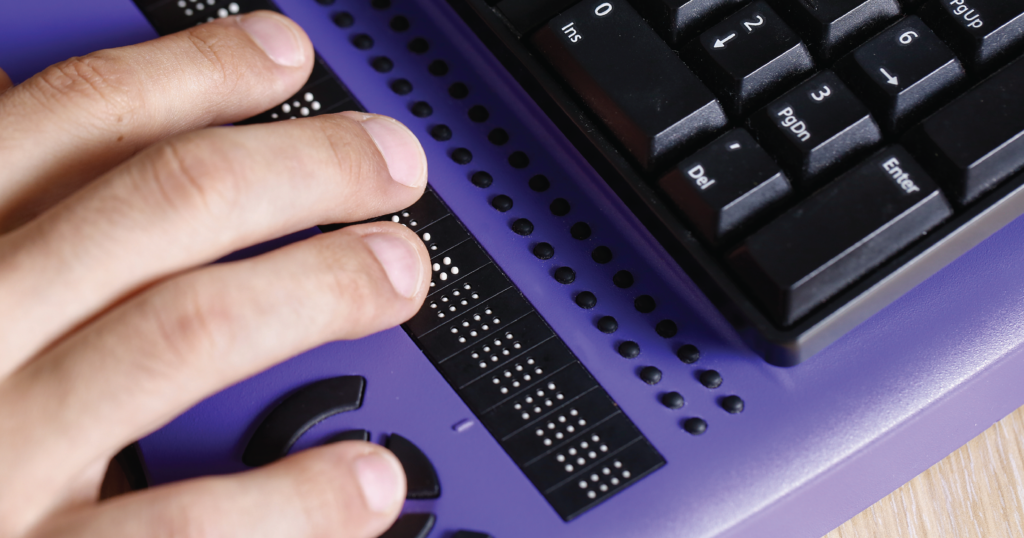Did you know that one in four US adults live with a disability? There are many types of disabilities—including mobility, cognition, independent living, hearing, vision, and self-care—with each type encompassing a range of conditions. For individuals taking a professional or educational exam, testing accommodations are an effective way to help offset the challenges their disability might present.
But what happens when assessment models shift in response to global events, tech advancements, or societal attitudes and structures? What about evolving accessibility regulations—what are the risks of failing to comply? How do testing programs and solution providers continue making thoughtful and deliberate accommodation decisions that foster an environment where every test-taker has an equal opportunity to succeed?
In this article, Meazure Learning’s Dr. Ashley Norris and uExamS’s Andy Dua explore some of the biggest trends in testing accommodation standards and practices. They explore the unique challenges introduced by these trends—and the equally unique solutions that can help address them.
Current Accommodation Trends, Challenges, and Solutions
For too long, the needs of those with disabilities were an afterthought. This persisted in innumerable ways throughout history and across every sector. However, some key trends we’re seeing in education and assessment today reflect an intentional shift toward greater inclusivity and fairness. Understanding and adapting to these changes is crucial to ensure that accommodation standards and practices meet the complex and varied needs of all test-takers.
Let’s explore a few of these trends.
Trend #1: Cognitive Disabilities Are More Common and Diverse

According to the CDC and Pew Research Center, nearly 13% of US adults and 15% of K-12 students have a cognitive disability. The latter is almost double what it was in the late 1970s. This trend has led to a spike in accommodation requests in recent years. While it’s good that test-takers are exercising their lawful right to accommodated testing conditions, the increasing volume and diversity of requests presents significant challenges.
Consider this scenario: A test-taker with dyslexia submits a request for triple testing time. While this type of accommodation will help provide an equitable experience, it requires considerable logistical planning and resource allocation by the test provider. For a remotely proctored test, a longer session is needed—and sometimes additional proctors too. Furthermore, there’s the challenge of ensuring the extended time truly benefits the test-taker it aims to support, without inadvertently causing fatigue or diminishing returns in concentration over such extended periods.
How You Can Respond
Our best advice is to strike a balance between having standard, scalable processes and being flexible enough to adapt to unique situations. The vast majority of accommodation requests can be handled in a standardized way, which means you need well-established policies, as well as systems and processes that can handle the volume you experience. But there will invariably be cases that defy the standard mold and require a tailored approach.
One factor in achieving this balance is a strong process for reviewing requests and verifying their legitimacy, which allows you to identify the appropriate level of support required early on. You also need clear instructions for test-takers to request accommodations and a way for them to provide feedback too. But that’s not all: Ongoing training and awareness programs as well as solid documentation and communication policies are also must-haves. This multifaceted approach makes the process of testing accommodation fulfillment easier, helps test-takers get the support they deserve, and ensures they have adequate time to prepare before test day.
Let’s apply this approach to our earlier hypothetical scenario. If the test-taker requires more testing time than four or five hours, you could change the test to be a multiday or multiformat exam. Moreover, you could build that time threshold into your policies to address rarer requests while maintaining implementation consistency.
“Tailored accommodations level the testing ground, allowing every test-taker to shine regardless of challenges. Inclusive practices ensure that potential is not limited by circumstance but fostered by opportunity.”
—Andy Dua, Chief Operating Officer, uExamS
Trend #2: Disability Rights and Requirements Are Evolving

Before the Americans with Disabilities Act was passed in 1990, test-takers had a lot of trouble obtaining necessary accommodations due to the lack of standardized regulations. Since then, tremendous progress around disability rights has been made in the United States, with Canada and the EU following suit with their own advancements. Notably, the recent European Accessibility Act (EAA) requires all EU members to make products and services easily accessible for people with disabilities by 2025. This means all exam-related websites and platforms—including test delivery, learning management, and proctoring systems—must adhere to the Web Content Accessibility Guidelines and allow for assistive technologies, such as screen readers and magnifiers. Initiatives like these lead to a more inclusive and fair testing process, but adhering to them requires significant investment and commitment. This adds another layer of complexity to the already-complex process of accommodation fulfillment.
How You Can Respond
One solution is to develop an adaptive framework that includes:
- Regular Practice and Policy Review: Continuously update your organization’s practices and policies—such as approval guidelines, accommodation delivery, allowable technology, and UX accessibility—to comply with current laws
- Stakeholder Involvement Plan: Outline how you plan to include all relevant parties in the discussion
- Change Management: Establish strategies for adapting to legal and technological updates
- Communication Plan: Detail how changes are communicated internally and externally to ensure transparency and understanding across all levels
- Compliance Teams: Establish dedicated teams to oversee compliance efforts
- Training Programs: Implement training and awareness initiatives for your staff
- Collaborative Problem-Solving: Engage with industry peers to hear how they address tricky situations
Let’s bring this into the real world. Imagine you’re a credentialing program or higher-ed institution facing new EAA requirements. Every component of your website—including those that allow test-takers to register, access prep materials, and schedule a test date—must meet the new accessibility standards. We’re not just talking about font size and color contrast either; even your website code must be written in a compliant way. By regularly reviewing your practices and training all your staff, you can make sure these critical changes are implemented effectively.
Trend #3: Balancing Test Security and Test-Taker Needs Is Tough

Maintaining the integrity of exams while providing fair accommodations is a delicate balancing act. And achieving this balance isn’t a one-off task. It demands continual adjustments as regulations, technologies, and accessibility needs evolve. This constant recalibration is an ongoing challenge for test programs and solution vendors. For instance, say you have a test-taker who needs to use a cell phone to monitor their glucose levels during a test. While medically necessary, the use of the cell phone could introduce potential security risks. So, what do you do?
How You Can Respond
Collaborate with a trusted solution provider on a strategy that ensures accommodations do not compromise test integrity. This strategy should include advanced yet adaptable security measures, user-centric technology design, and thorough training and support for test-takers, administrators, and proctors. It’s also important to incorporate feedback from test-taker reviews and conduct dry runs to identify and rectify any system or process issues.
Think back on the test-taker who’s been granted an accommodation to monitor their glucose via cell phone. If your program administers the test in person, you could work with your solution provider to conduct a live, remotely proctored session for the test-taker. You could then establish a rule that the test-taker must enable their phone’s airplane mode setting and keep it within their webcam’s view. This solution would allow them to use their cell phone as a medical device while still following stringent security measures.
“Finding the right balance between test security and accessibility isn’t just a challenge—it’s an opportunity to redefine fairness in testing. A big factor in this balance is collaboration and finding creative solutions together.”
—Dr. Ashley Norris, SVP of Strategic Growth Initiatives & Compliance, Meazure Learning
Conclusion
As the assessment landscape continues to evolve, so too must our approach to testing accommodations. By embracing these changes as opportunities rather than barriers, we can provide a fair chance for every test-taker to succeed. How do we accomplish that? Through continued research, awareness, and adaptation of our assessment practices to meet the needs of all test-takers, including those with disabilities.
To learn more about this topic, watch our on-demand webinar “Adapting to Change: Accommodations in the New Era of Testing.”
About the Authors

Dr. Ashley Norris
Senior Vice President, Strategic Growth Initiatives and Compliance, Meazure Learning

Andy Dua
Chief Operating Officer, uExamS